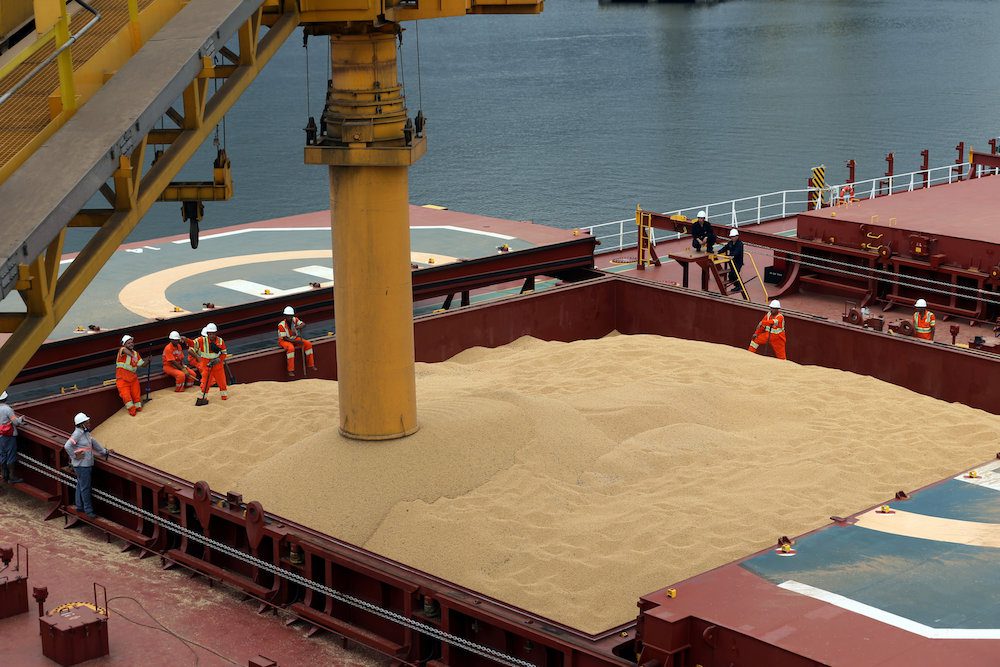By Ben Westcott and Erin Ailworth (Bloomberg) — China’s purchases of American soybeans appear to have stalled, less than two weeks after the US touted a wide-ranging trade truce that signaled thawing relations between the world’s two biggest economies.
After a flurry of orders late last month — which were the first of this season — Chinese imports of US cargoes seem to have faltered, according to traders who asked not to be identified discussing confidential information. They said they were not aware of new shipments. The pause is fueling uncertainty over whether the biggest consumer of American soybeans will import as much as US President Donald Trump’s administration claims to expect.
The agreement with China is seen as crucial for providing relief to struggling American farmers, who have been hard-hit by inflation and high input costs. The Asian country has held off buying US soybeans for much of this season, hurting growers while giving Beijing a key bargaining chip during negotiations with Washington. The US trade with China was worth more than $12 billion last year.
Soybean futures rallied in the weeks leading up to the deal, but have fluctuated since then amid worries over a lack of visibility on China’s purchases.
Washington said Beijing had pledged to buy 12 million tons of soybeans by the end of this year, followed by 25 million tons annually over the next three years. China has yet to confirm the specific purchase commitments mentioned by Trump’s team, but Beijing has reduced tariffs on American soybeans and lifted import bans on three American exporters, including CHS Inc., reciprocating similar conciliatory actions from the US.
“Within the industry many view the reported commitment by China to purchase 12 million tons of US soybeans to be more of a diplomatic gesture than a firm trade deal,” said Kang Wei Cheang, an agricultural broker at StoneX Group Inc. in Singapore.
China has spent the past few months buying massive amounts of South American beans in a bid to diversify its sources. Therefore, Chinese demand is expected to be lower in the coming months regardless of any trade deal with the US, according to Vitor Pistoia, senior grains and oilseeds analyst at Rabobank.
Chinese crushers will need to cover some December–January shipments before new-crop supplies from top exporter Brazil become available, but those are expected to be only a few million tons, according to some industry estimates. That would still put the need for US cargoes well below the purchasing target for this year cited by Washington.
Moreover, US soybeans still face a 13% tariff, according to traders, and processing them would result in heavy losses, leaving Chinese commercial crushers with little incentive to book American cargoes.
US soybeans are also trading at a premium to South American beans, according to Cheang at StoneX, partly due to the jump in prices after the trade deal was announced.
With Brazil’s planting season progressing normally and new crop supplies expected by late January to early February, Chinese buyers are reluctant to secure large volumes from the US for near-term shipment, he added.
Recent purchases of US soybeans were done by China’s state-owned firms, with a big chunk possibly destined for state reserves, traders said. For commercial buyers, the trade truce has reopened the field to American supplies, which now must compete with Brazil for a sales window that is quickly disappearing.
“Poor crush margins and high port stocks in China do not point to the need for bulk US purchases in the near-term,” The Hightower Report said in a note. “More likely, China will wait and see if US prices sink back below Brazil before stepping in.”
South Dakota farmer Christine Hamilton, who has been storing her soybean crop and moving corn as needed, said she remains hopeful about the deal struck between Trump and Chinese leader Xi Jinping.
“Any developments that increase the market are always good, just because that helps the price and the demand,” she said. “I’m cautiously optimistic because lots of deals can be made and until they’re executed it’s always a chip on the table to see if the agreements are going to be executed on.”
© 2025 Bloomberg L.P.

 Join The Club
Join The Club











